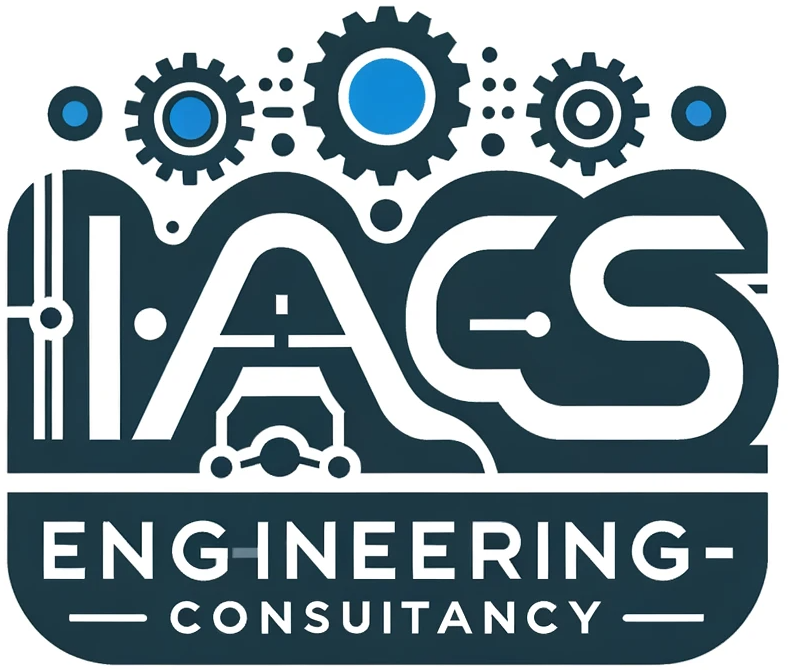A REST (Representational State Transfer) API is an architectural style for designing networked applications using standard HTTP methods (GET, POST, PUT, DELETE). It enables communication between systems via URIs (Uniform Resource Identifiers) and operates in a stateless, client-server model. Data is typically exchanged in formats like JSON or XML.
Industrial automation and control systems (IACS) are undergoing a digital revolution, driven by Industry 4.0 and the Industrial Internet of Things (IIoT). At the heart of this transformation lies REST API development, a modern approach to integrating legacy machinery, IoT devices, and enterprise IT systems. In the modern era of Industrial Automation and Control Systems Engineering, REST APIs (Representational State Transfer Application Programming Interfaces) are essential for interconnectivity, interoperability, and scalability. They enable seamless communication between industrial devices, control systems, cloud platforms, and enterprise applications, forming the backbone of Industry 4.0 and Industrial IoT (IIoT) ecosystems.
This page explores why REST APIs are critical, where they apply, and how to develop them effectively.
Why REST APIs Are Critical for Industrial Automation
1. Breaking Silos with Interoperability
REST APIs use standard HTTP/HTTPS protocols and structured data formats (JSON/XML) to ensure seamless communication between PLCs, SCADA systems, sensors, cloud platforms, MES, and ERP systems. This eliminates proprietary system silos and enables IT-OT convergence.
2. Enabling Scalable, Distributed Networks
The stateless architecture of REST APIs supports horizontal scaling, making them ideal for edge computing nodes, IoT gateways, and cloud-based analytics.
3. Powering Real-Time Data Access & Monitoring
REST APIs enable access to machine health data, production metrics, and energy consumption stats. This real-time data supports predictive maintenance and live dashboards.
4. Enhancing Security & Controlled Access
- Use HTTPS, OAuth2, and API gateways to secure data.
- Protect sensitive industrial control systems from cyber threats while allowing secure remote access.
5. Cost-Effective Modernization
Legacy systems using protocols like Modbus and PROFIBUS can be wrapped with REST APIs, enabling integration with modern IIoT frameworks without expensive replacements.
Key Use Cases of REST APIs in Industrial Automation
| Use Case | Description |
|---|---|
| Remote Monitoring & Predictive Maintenance | REST APIs collect vibration, temperature, and pressure data from IoT sensors for predictive failure detection. |
| Digital Twin Integration | REST APIs mirror physical assets (e.g., robotic arms, CNC machines) in virtual environments for simulation and optimization. |
| MES & ERP System Connectivity | Automate inventory updates, quality control, and order tracking by integrating Manufacturing Execution Systems (MES) with Enterprise Resource Planning (ERP) via REST APIs. |
| Edge-to-Cloud Data Pipelines | REST APIs on edge devices preprocess and transmit selected data to the cloud, reducing latency and bandwidth usage. |
| Multi-Vendor Device Management | REST APIs configure and update heterogeneous devices (e.g., Siemens PLCs, Rockwell HMIs) via standardized endpoints. |
Best Practices for REST API Development in Industrial Automation
1. Prioritize Security
- Enforce HTTPS with TLS 1.3 encryption.
- Implement OAuth2, JWT, or API keys for authentication.
- Segment networks to isolate critical OT systems.
2. Optimize for Low Bandwidth Industrial Networks
- Use compressed payloads (gzip, Brotli) to reduce data size.
- Implement pagination for large datasets (
GET /sensors?page=2&limit=50).
3. Ensure API Versioning & Maintainability
- Use versioned endpoints (
/api/v2/machines) to maintain backward compatibility.
4. Leverage Open Standards
- Adopt Swagger/OpenAPI for API documentation.
- Use JSON Schema for data validation.
5. Optimize for Real-Time Constraints
- Combine REST APIs with MQTT or WebSockets for time-sensitive applications.
Example: REST API for Industrial Data Retrieval
1. Fetching Sensor Data
GET /api/v1/sensors/{id}/data
Authorization: Bearer <token>Response:
{
"sensor_id": "ABC123",
"temperature": 75.2,
"humidity": 60,
"timestamp": "2025-02-10T12:00:00Z"
}2. Sending a Control Command to a PLC
POST /api/v1/plc/commands
Authorization: Bearer <token>
Content-Type: application/jsonPayload:
{
"device_id": "PLC001",
"command": "START",
"parameters": {
"speed": 1500
}
}REST APIs vs. Traditional Industrial Protocols
| Factor | REST API | OPC-UA/Modbus |
| Speed | Suitable for seconds-level tasks | Optimized for real-time control |
| Use Case | Data aggregation, analytics, reporting | Low-latency machine control |
| Scalability | High (cloud-native) | Limited to local networks |
Challenges & Solutions
Legacy System Integration
Solution: Use middleware (e.g., Node-RED, OPC-UA wrappers) to convert REST requests into Modbus TCP or legacy protocols.
Managing High Data Volumes
Solution: Process raw data at the edge and transmit only aggregated insights to the cloud.
Cybersecurity Risks
Solution: Deploy industrial firewalls, conduct penetration testing, and adhere to IEC 62443 security standards.
Conclusion: Future-Proofing Industrial Automation with REST APIs
REST APIs are a cornerstone of Industry 4.0, unlocking cross-system interoperability, remote accessibility, and actionable insights. By adopting RESTful architectures, manufacturers can enhance efficiency, automation, and digital transformation.
Ready to Transform Your Industrial Systems?
[Contact Us] for secure, scalable, and high-performance REST API solutions.
FAQ Section
Q: Are REST APIs secure for industrial systems?
A: Yes, when paired with HTTPS, OAuth2, and network segmentation.
Q: Can REST APIs replace OPC-UA?
A: No—they serve different layers (REST for IT/cloud, OPC-UA for OT/real-time control).
Q: How to handle high-frequency sensor data?
A: Use edge computing for preprocessing and MQTT for real-time streaming.
